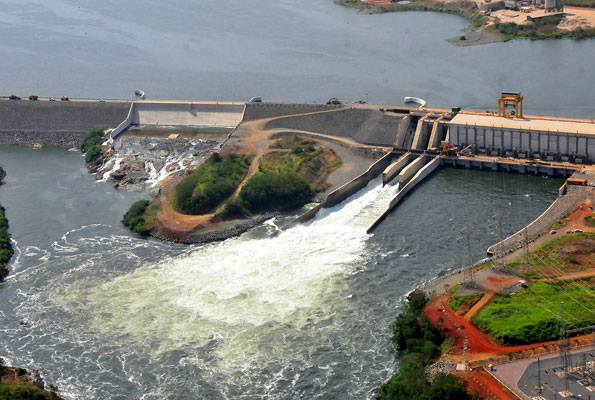The first decade of the NRM government was characterized by grappling with the need to provide social services and the lack of resources to finance them. It was a delicate balancing act between rehabilitating the dilapidated economy and the need to better the living standards of the masses. Little could be domestically achieved given the paltry tax base. The Gross Domestic Product (GDP) was so miserable that no meaningful fiscal or monetary policies could realise the much needed turn-around of the dire straits the country was plunged into during the past turbulent regimes.
Different policies like currency reform, structural adjustment program, privatization etc were intended to resuscitate the ailing economy, however with all the efforts executed, there was a missing link in the value chain to trigger the much needed development. It should be noted that unless the tax collection expanded, it was going to be hard to achieve these aspirations. A low tax to GDP ratio had two direct economic effects, firstly, it was hard to raise the tax revenues domestically, and secondly few international financiers were keen to lend money to a country without prospects of paying back. Uganda didn’t look that promising until its tax to GDP ratio started to increase. With increased taxes, it gave confidence to the government to make a radical decision of investing heavily in infrastructure in spite of all the resistance from politicians
The biggest challenges then were lack power and poor infrastructure. So the decision was both economically and politically right though it caused distress on direct social service delivery. Opposition politicians led by former MPs Ken Lukyamuzi and Salaam Musumba waged a crusade against Bujagali, citing disturbing the evil spirits of Budhagali and the rare butterflies in the area ecosystem. However, the Government took affirm stand and built the dam and today the results are evident despite the power cost, which is being re-negotiated. Power distribution has expanded to areas that hitherto were not on the national grid. The expansion has the ripple effect of creating more jobs in emerging urban centers like welding, maize mills, saloons etc mostly for youths.
The spread of industries to most parts of the country is a clear indication that industries don’t have to clutter in major towns only. This has improved urbanization all over the country thus reducing congestion on major towns and the resultant social problems. Industrialisation cannot be realized without power.
It should be recalled that by the time the decision to generate more was taken, load shedding was a permanent feature in the country. Currently there are 27 power stations that include hydro, thermal, hybrid, solar, geothermal and wind and several others under construction in different parts of the country.
Whereas the government is the major player in the power field, there are power stations that are community based and for private investors. By 2020 the generating capacity of at least 1,681 megawatts is projected. Those operational include; Adekokwok in Lira (8 mgwts), Bugoye in Kasese (13 mgwts), Bujagali in Buikwe (250 mgwts), Kabalega in Hoima (9mgwts), Kanungu (6.6mgwts), Kiira in Jinja (200mgwts), Mpanga in Kamwenge (18mg wts), MubukuI in Kasese (5mgwts), MubukuIII (10mgts), Nalubaale in Buikwe (180mgwts) Nyagak in Paidha (3.5mgwts), Kisiizi in Rukungiri (0.3mgwts), Gwere-Luzira in Moyo (0.5kwts), Muvumbe in kabale (6.5mgwts), Rwimi in Bunyangabo (5.6mgwts).
The other ten power stations under construction include, Isimba in Kamuli (1,832mgwts), Karuma in Kiryandongo (600mgwts), SittiII in Bukwo (16.5mgwts), Nkusi in Hoima (9.5mgwts), AchwaII in Gulu (42mgwts), Kyambura in Rubirizi (7.6mgwts), Nyamwamba in Kasese (14mgwts).
Other proposed power stations include AswaIII (10mg), Agbinika (20), Ayago (600mgwts), Muzizi (44.7mgwts) Nengo bridge (6.7 mgwts) NyagakII (5mgwts), NyagakIII (5.56mgwts), Waki (5mgwts), Kikagati (16), Nshungyezi (39mgwts).
There are major initiatives in thermal, bio-thermal and geo- thermal and solar. There are eight (8) operational thermal power stations currently and other two are under construction. The operational ones include, Bugala in Kalangala (1.5mgwts), Namanve in Mukono (50mgwts), Tororo in Tororo (80mgwts), Kakira in Jinja (52mgwts), Kinyara in Masindi(40mgwts), Kaliro in Kaliro (14mgwts), Lugazi in Buikwe (14mgwts), Mayuge (1.6 mgwts) these use a combination of Biodiesel, crude oil and Bagasse is mostly used by sugar factories. The proposed ones include, Nzizi (100mgwts), Osukuru in Tororo (12mgwts).
There are great strides in the solar energy sector, there are two operational stations in soroti and Tororo with a combined output of 20 mgwts. There are a number of stations under construction too, which include Namugonga in Wakiso (50 mgwts), Kabulasoke in Gomba (20mgwts), Mayuge (15mgwts).
In the Geothermal sub-sector, there are two major players. These include, Buranga in Bundibugyo(100mgwts), Katwe in Kasese (150mgwts). There is also a wind power station proposed in Tororo.
The economic dividends of investing in the power sector is seen in the emergence of industries in areas far away from Kampala like Nakaseke and all the major highways across the country. The Rural Electrification project is intended to spread power lines to areas that have had no chance in the past to get connected to the national Grid. With increased users it is expected to pull down the cost per capita unit.




